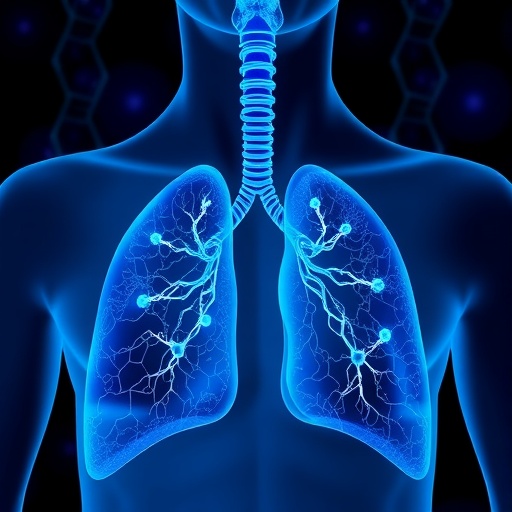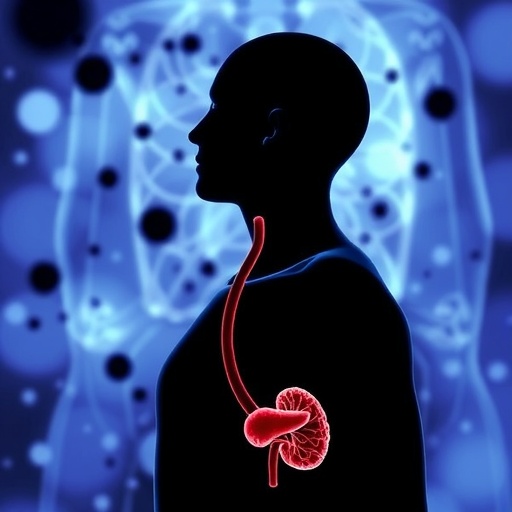
In a groundbreaking study that could reshape the future of cancer prevention and therapy, researchers have unveiled the potent protective effects of valencene, a natural sesquiterpene compound, against benzo(a)pyrene-induced lung cancer in Swiss albino mice. This discovery sheds new light on how naturally derived substances might serve as a cornerstone for innovative treatments aimed at one of the deadliest forms of cancer worldwide. Lung cancer remains a global health crisis, and the quest for effective, low-toxicity therapies is relentless. The recent findings elevate valencene from a mere bioactive compound to a promising candidate in the fight against carcinogenesis.
Valencene is a sesquiterpene commonly found in citrus fruits, known for its distinct aroma and potential bioactivities. While its role in flavoring and fragrance industries has been well documented, this study pioneers its application in oncological research, particularly focusing on its chemopreventive capabilities. The research team centered their investigation on benzo(a)pyrene (BaP), a notorious polycyclic aromatic hydrocarbon and a powerful carcinogen found in tobacco smoke, charred foods, and environmental pollutants. BaP is infamous for its capacity to induce lung carcinogenesis through the formation of DNA adducts, oxidative stress, and inflammatory pathways.
The experimental approach employed Swiss albino mice, a widely accepted animal model for carcinogenic and toxicological studies due to their physiological and genetic similarities to humans in cancer pathology. Over a controlled exposure period, these mice were subjected to BaP to induce lung tumorigenesis, simulating the environmental factors that lead to human lung cancer. The intervention group received valencene in parallel, allowing the team to meticulously evaluate the compound’s protective efficacy through a series of biochemical, histopathological, and molecular analyses.
.adsslot_a4EPvKzjeq{width:728px !important;height:90px !important;}
@media(max-width:1199px){ .adsslot_a4EPvKzjeq{width:468px !important;height:60px !important;}
}
@media(max-width:767px){ .adsslot_a4EPvKzjeq{width:320px !important;height:50px !important;}
}
ADVERTISEMENT
One of the most striking findings was valencene’s significant reduction in tumor incidence and multiplicity in the BaP-exposed mice. The compound appeared to exert multi-faceted protective effects, beginning with its pronounced antioxidant capacity. Oxidative stress, a hallmark of carcinogenesis, results from an imbalance between reactive oxygen species (ROS) and the biological system’s ability to detoxify these reactive intermediates. Valencene’s ability to scavenge free radicals curbed ROS accumulation, thereby protecting the cellular DNA from oxidative damage and subsequent mutagenesis.
Further evidence from the study indicated that valencene modulated key signaling pathways associated with inflammation, a critical driver of cancer progression. Chronic inflammation fosters a microenvironment conducive to DNA damage, proliferation, and eventual tumor formation. Through downregulating pro-inflammatory cytokines and inhibiting nuclear factor-kappa B (NF-κB) activation, valencene effectively suppressed inflammatory cascades. This dual anti-oxidative and anti-inflammatory action is essential, as it intercepts both the initiation and promotion phases of lung carcinogenesis.
Moreover, histopathological examination of lung tissue from the treated groups revealed well-preserved alveolar architecture and a marked reduction in hyperplastic and neoplastic lesions. This morphological evidence corroborated the biochemical parameters, affirming that valencene’s effects transcended molecular markers and translated into tangible tissue protection. Of particular interest was the normalization of enzymatic antioxidants such as superoxide dismutase (SOD), catalase (CAT), and glutathione peroxidase (GPx) in valencene-administered mice, indicating restoration of the intrinsic cellular defense mechanisms compromised by BaP.
The study also explored the molecular mechanisms underpinning valencene’s protective role by analyzing apoptosis and cell cycle regulator levels. Apoptosis, or programmed cell death, is a natural barrier against cancer development by eliminating damaged or abnormal cells. BaP exposure notoriously inhibits apoptotic pathways, allowing damaged cells to evade death and propagate mutations. Valencene reversed this trend by upregulating pro-apoptotic markers such as Bax and caspase-3, while downregulating anti-apoptotic proteins like Bcl-2, thereby reinstating the cellular capacity to self-regulate aberrant growth.
Interference with the cell cycle is another critical front in cancer biology. Dysregulation allows unchecked cellular proliferation, a defining characteristic of malignancy. Valencene was found to induce cell cycle arrest at the G0/G1 phase, effectively halting the propagation of cells harboring DNA damage. This blockade prevents the progression into S phase where DNA replication occurs, reducing mutation accumulation and tumor growth odds.
The translational implications of these findings are manifold. First, valencene’s natural abundance and established safety profile as a food-grade substance underscore its potential for human application with minimal adverse effects. Its dual action on oxidative stress and inflammation positions it as a promising chemopreventive agent or adjunct to conventional therapies. Secondly, the study paves the way for detailed clinical investigations to validate these preclinical results and optimize dosing strategies suitable for human metabolism and pathophysiology.
Furthermore, the paradigm of using phytochemicals like valencene aligns seamlessly with the rising interest in nutraceuticals and integrative oncology. As the limitations of existing chemotherapeutics—such as toxicity and resistance—become increasingly evident, leveraging nature-derived compounds with multi-targeted effects offers a peaceful yet powerful new front in cancer management. Strategy design can focus on synergizing compounds like valencene with current drugs to enhance efficacy and reduce side effects, a synergy that could revolutionize standardized protocols.
Critics might argue that rodent models, while valuable, cannot entirely replicate human complexity, and there remains a significant gap before clinical application is feasible. However, the rigorous methodology, coupled with the reproducibility potential of sesquiterpene effects, inspires cautious optimism. The study also opens questions about the bioavailability and pharmacokinetics of valencene in humans, critical considerations for drug development.
Notably, the research team used comprehensive omics approaches to identify gene expression profiles modulated by valencene treatment, revealing downregulation of cytochrome P450 enzymes responsible for BaP activation and increased expression of phase II detoxifying enzymes. This enzymatic modulation reduces the formation of reactive BaP metabolites, highlighting another layer of valencene’s protective mechanism. It’s a sophisticated interplay of metabolic inhibition and cellular defense enhancement illustrating the compound’s pleiotropic nature.
In the broader context, environmental toxins like BaP contribute enormously to global lung cancer epidemiology, especially in urban and industrial areas. Finding effective preventive agents is crucial, given the persistent exposure humans face through pollution and lifestyle factors such as smoking. Valencene’s efficacy against such a potent carcinogen signals not only therapeutic hope but also preventive potential for at-risk populations if incorporated into diet or supplements.
Embracing the philosophy of preventive medicine, valencene epitomizes how natural products can be harnessed to mitigate chronic disease burden before manifest pathology. This research adds to the compelling evidence base suggesting that phytochemicals, long used in traditional medicine, hold potent molecular tools fighting modern diseases on their own biological terrain.
In conclusion, this study on valencene profoundly expands our understanding of how a naturally derived sesquiterpene can combat chemically induced lung carcinogenesis through multiple biochemical and molecular mechanisms. By targeting oxidative stress, inflammation, apoptosis, and cell cycle regulation in concert, valencene represents a holistic approach to cancer prevention. The promising preclinical results offer a robust foundation for future translational research, potentially ushering in new, safer strategies in the global battle against lung cancer. With further development, valencene might transform from a fragrant citrus compound into a beacon of hope against one of humanity’s deadliest adversaries.
Subject of Research: Protective effects of valencene against benzo(a)pyrene-induced lung cancer in mice
Article Title: Protective effects of valencene, a natural sesquiterpene, against benzo(a)pyrene-induced lung cancer in Swiss albino mice
Article References:
Pant, J., Marwah, H., Mittal, P. et al. Protective effects of valencene, a natural sesquiterpene, against benzo(a)pyrene-induced lung cancer in Swiss albino mice. Med Oncol 42, 393 (2025). https://doi.org/10.1007/s12032-025-02962-4
Image Credits: AI Generated
Tags: benzo(a)pyrene carcinogenesischemopreventive agents for lung cancercitrus-derived compounds and health benefitsenvironmental pollutants and lung cancerinnovative cancer therapieslow toxicity cancer treatmentsnatural compounds in cancer therapynatural substances in oncologypolycyclic aromatic hydrocarbons and healthsesquiterpene bioactivitiesSwiss albino mice in researchvalencene lung cancer prevention





